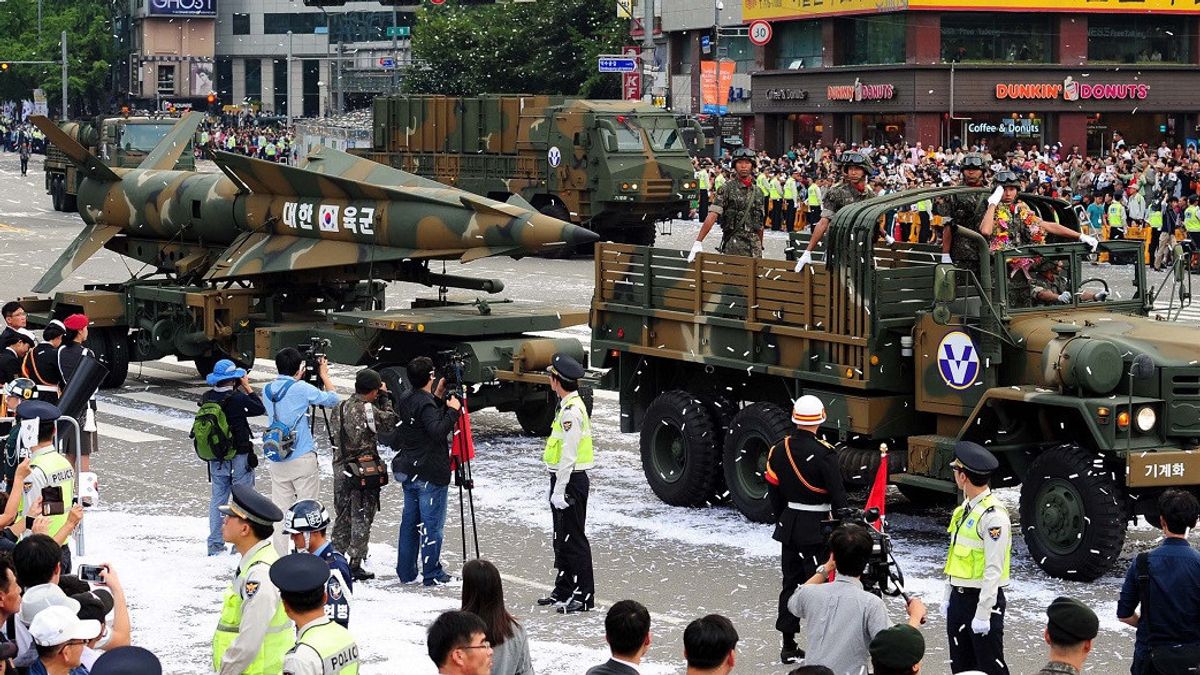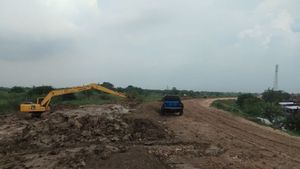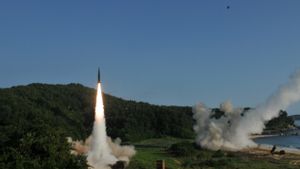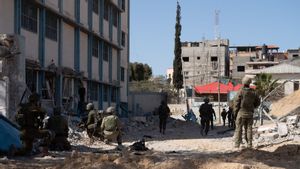
JAKARTA - South Korea continues to develop domestically-made ballistic missiles capable of carrying a warhead of up to 3 tons, and capable of reaching targets as far as 350-400 kilometers which are in the final stages, Yonhap news agency said on Thursday.
In the defense blueprint for 2022-2026, the Ministry of Defense said it would develop new missiles with significantly increased destructive power, upgrade missile defense systems and deploy new interceptors against long-range artillery.
"We will develop more powerful, long-range and more precise missiles to carry out deterrence and achieve security and peace on the Korean Peninsula," South Korea's Defense Ministry said in a statement.
The newly developed missile is said to be capable of a range of 350-400 kilometers with a warhead of up to 3 tons, designed to destroy underground facilities such as those believed to be used by North Korea to store nuclear weapons, Yonhap reported, citing unnamed sources.

The missile will be the latest in a conventional missile race between the two Koreas, which will accelerate after South Korea and the United States agreed to scrap all bilateral restrictions on Seoul's missile development earlier this year.
In May, Seoul and Washington agreed to lift restrictions on "missile guidelines" that had barred South Korea from developing or possessing ballistic missiles with a maximum range of more than 800 kilometers, citing the Korea Times.
In 2020, South Korea announced the new Hyunmoo-4 short-range ballistic missile (SRBM) which can carry a 2-ton warhead. Meanwhile, in March North Korea tested an SRBM that it says can deliver a payload of 2.5 tons. Hyunmoo-4 is South Korea's largest missile.
"Following the termination of the guidelines, we will take precautionary measures against potential threats and enhance attack capabilities against key targets," the defense ministry said in a statement.
Last Friday, a report by the International Atomic Energy Agency (IAEA) said it had detected "very troubling" indications that the main nuclear reactor in North Yongbyon's main complex had been operating since July.
"To prevent long-range provocations, we will sharply increase the number of interceptors targeting medium and long-range missiles," the ministry said, referring to its push to develop its own interceptor systems such as Israel's Iron Dome.
Overall South Korea's defense blueprint budgeted expenditures of 315.2 trillion won, equivalent to US$273 billion, an average increase of 5.8 percent year-on-year, over the next five years.
The English, Chinese, Japanese, Arabic, and French versions are automatically generated by the AI. So there may still be inaccuracies in translating, please always see Indonesian as our main language. (system supported by DigitalSiber.id)












